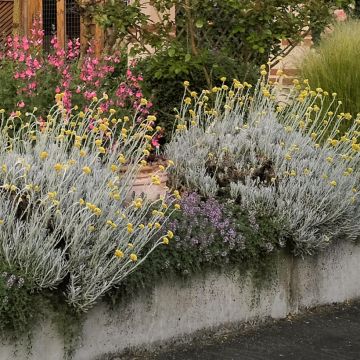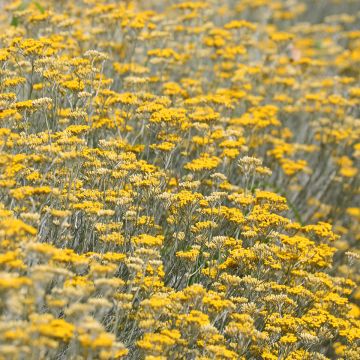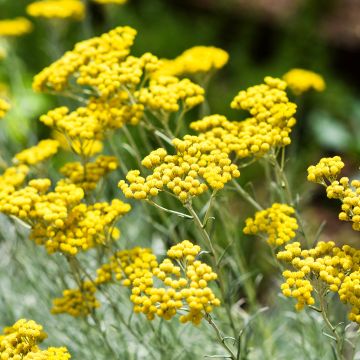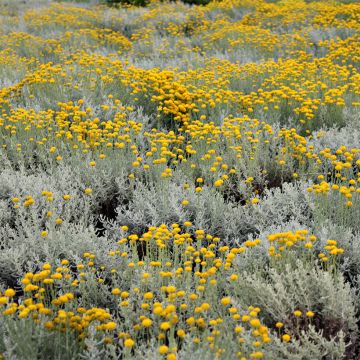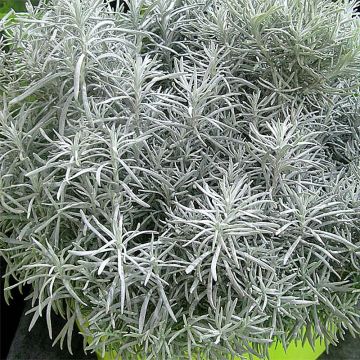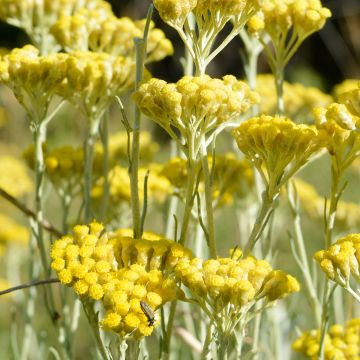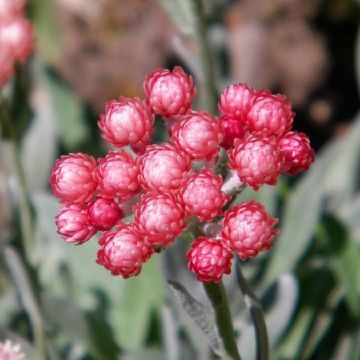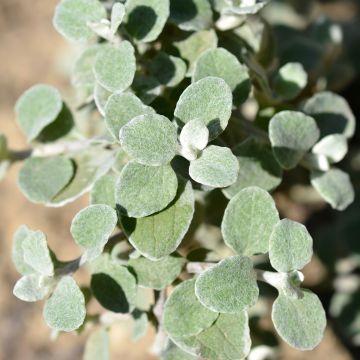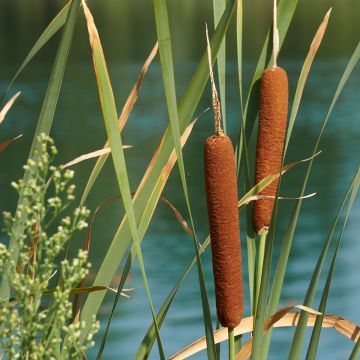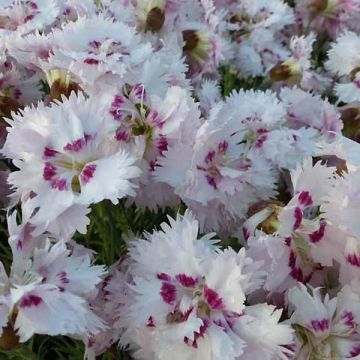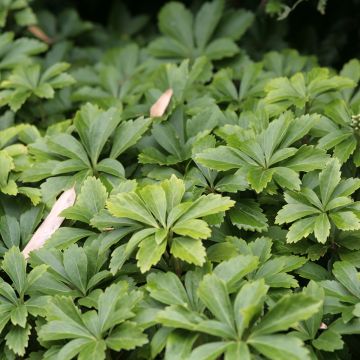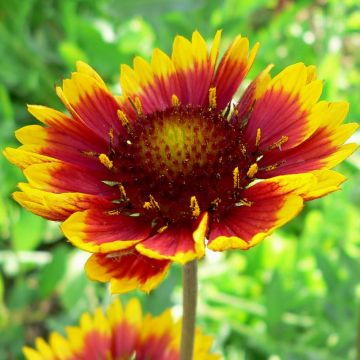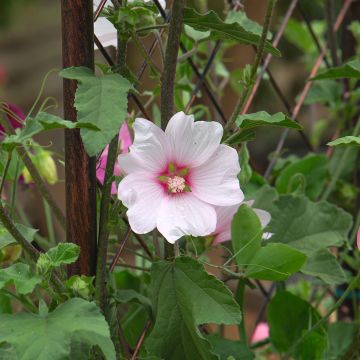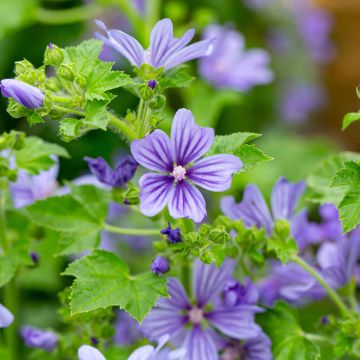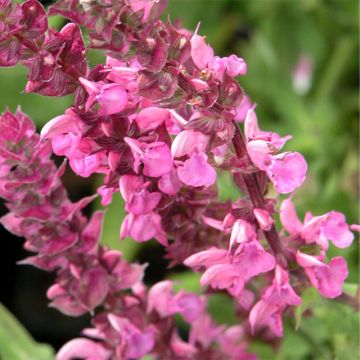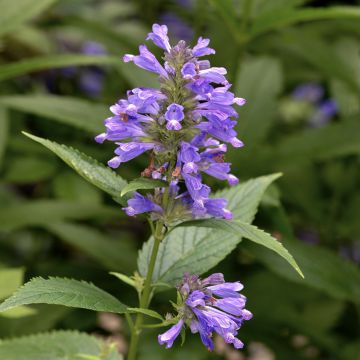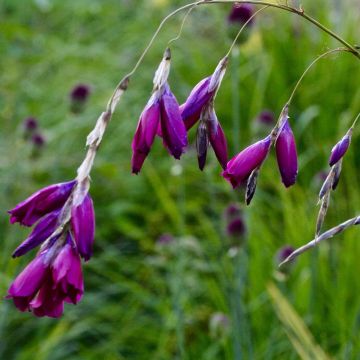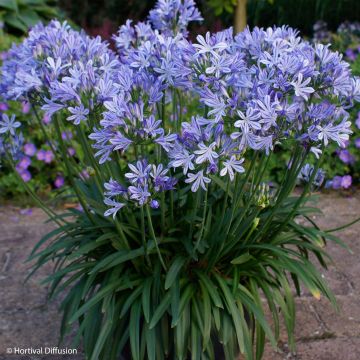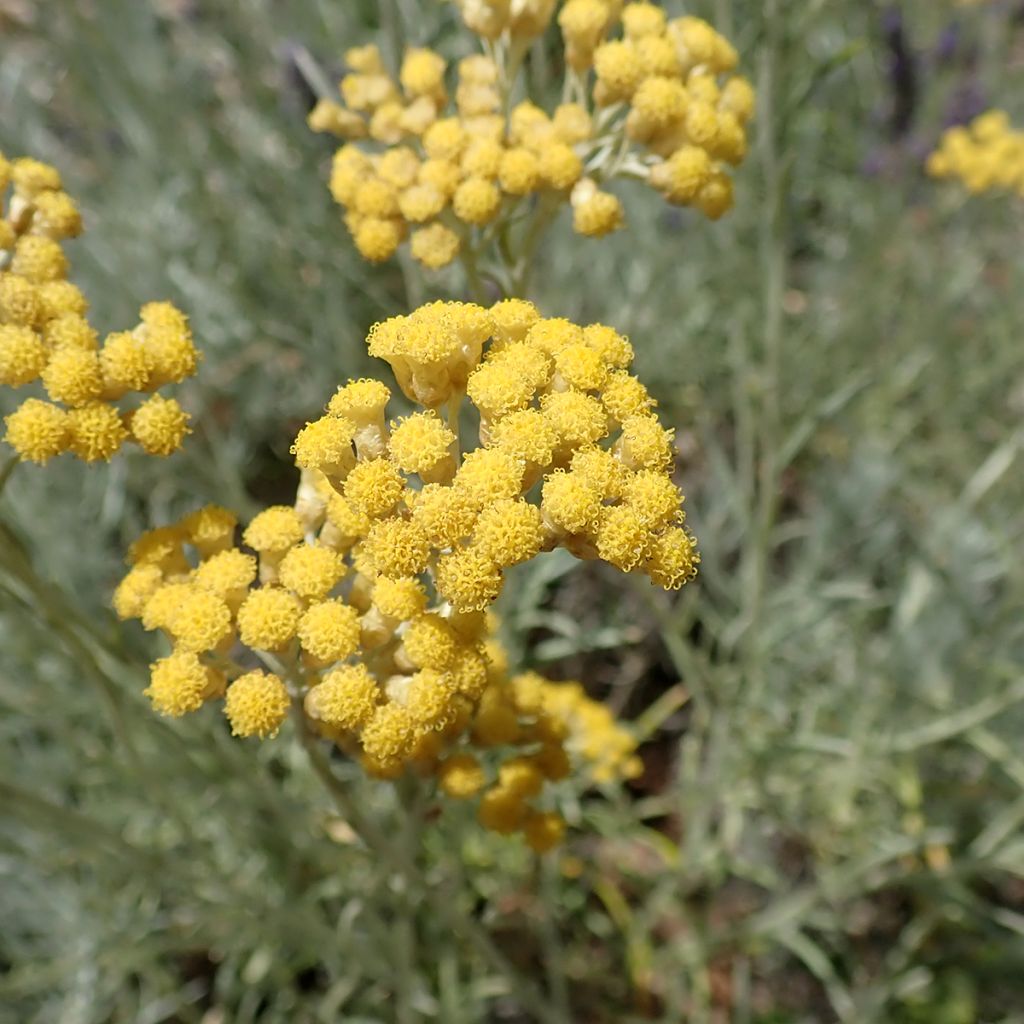

Helichrysum italicum subsp. serotinum
Helichrysum italicum subsp. serotinum
Helichrysum italicum subsp. serotinum
Curry Plant, Italian Strawflower
This item cannot be shipped to the selected country
Delivery charge from €5.90
More information
Schedule delivery date,
and select date in basket
This plant carries a 12 months recovery warranty
More information
We guarantee the quality of our plants for a full growing cycle, and will replace at our expense any plant that fails to recover under normal climatic and planting conditions.
From €5.90 for pickup delivery and €6.90 for home delivery
Express home delivery from €8.90.
Does this plant fit my garden?
Set up your Plantfit profile →
Description
The Hélichrysum italicum subsp. serotinum, also known as Italian Everlasting or Curry Plant, is a compact shrub with a low habit and upright, downy stems. Its slender, silvery-grey leaves are remarkably aromatic, exuding a powerful curry fragrance. They persist throughout the winter. From June to August, its yellow flowers arranged in corymbs make beautiful dried bouquets. They are highly visited by pollinating insects.
From the Asteraceae family, Hélichrysum italicum subsp. serotinum is native to the Mediterranean basin and thrives in dry and rocky terrain. This small undershrub forms a wide and dense clump, measuring 40 to 50 cm in height and 60 to 75 cm in width. Its numerous upright and woolly stems bear linear leaves, 1 to 3 cm long, with a silvery grey colour, evergreen in winter. Flowering occurs from June to August, depending on the climate. At the end of the stems, inflorescences of small yellow heads surrounded by golden bracts appear. Once dried, you can make lovely bouquets with them. Pick them at the beginning of flowering and dry the flowered stems upside down in a dark room.
The Curry Plant is a plant that is fond of sun and dry soils. It tolerates summer drought well. Hardy down to -15°C, it withstands cold winters in well-drained soil. It can be planted in a flower bed, a dry rock garden, or a large container. It is also ideal in a vegetable garden, attracting pollinating insects. Contrary to its name, curry plants are not used in curry but are a blend of different spices. However, its fresh leaves can be used in cooking to flavour fish, grilled meats, rice, poultry, or marinades. Add them to flavour your dishes at the end of cooking, like a bouquet garni you will remove before serving (like bay leaves). They are not very digestible. Evergreen they are available throughout the year, according to your needs.
Report an error about the product description
Flowering
Foliage
Plant habit
Botanical data
Helichrysum
italicum subsp. serotinum
Asteraceae
Curry Plant, Italian Strawflower
Helichrysum serotinum
Mediterranean
Other Helichrysum
Planting and care
Helichrysum italicum subsp. serotinum is a plant that thrives in dry soil and prefers light, well-drained, preferably neutral to limestone soils. This curry plant dreads overly wet soils in winter. It is resistant to drought and can go without watering when grown in open ground. In a pot, water sparingly, allowing the substrate to dry between waterings. Do not place a saucer under your pot or empty it as needed. Water regularly at planting, whether in a pot or open ground, until it takes root. Choose a sunny location sheltered from cold winds. Remove faded flowers. If necessary, lightly prune in late winter to maintain a compact habit. If aphids invade your curry plant, use nettle manure or black soap.
Planting period
Intended location
Care
This item has not been reviewed yet - be the first to leave a review about it.
Summer flowering perennials
Haven't found what you were looking for?
Hardiness is the lowest winter temperature a plant can endure without suffering serious damage or even dying. However, hardiness is affected by location (a sheltered area, such as a patio), protection (winter cover) and soil type (hardiness is improved by well-drained soil).

Photo Sharing Terms & Conditions
In order to encourage gardeners to interact and share their experiences, Promesse de fleurs offers various media enabling content to be uploaded onto its Site - in particular via the ‘Photo sharing’ module.
The User agrees to refrain from:
- Posting any content that is illegal, prejudicial, insulting, racist, inciteful to hatred, revisionist, contrary to public decency, that infringes on privacy or on the privacy rights of third parties, in particular the publicity rights of persons and goods, intellectual property rights, or the right to privacy.
- Submitting content on behalf of a third party;
- Impersonate the identity of a third party and/or publish any personal information about a third party;
In general, the User undertakes to refrain from any unethical behaviour.
All Content (in particular text, comments, files, images, photos, videos, creative works, etc.), which may be subject to property or intellectual property rights, image or other private rights, shall remain the property of the User, subject to the limited rights granted by the terms of the licence granted by Promesse de fleurs as stated below. Users are at liberty to publish or not to publish such Content on the Site, notably via the ‘Photo Sharing’ facility, and accept that this Content shall be made public and freely accessible, notably on the Internet.
Users further acknowledge, undertake to have ,and guarantee that they hold all necessary rights and permissions to publish such material on the Site, in particular with regard to the legislation in force pertaining to any privacy, property, intellectual property, image, or contractual rights, or rights of any other nature. By publishing such Content on the Site, Users acknowledge accepting full liability as publishers of the Content within the meaning of the law, and grant Promesse de fleurs, free of charge, an inclusive, worldwide licence for the said Content for the entire duration of its publication, including all reproduction, representation, up/downloading, displaying, performing, transmission, and storage rights.
Users also grant permission for their name to be linked to the Content and accept that this link may not always be made available.
By engaging in posting material, Users consent to their Content becoming automatically accessible on the Internet, in particular on other sites and/or blogs and/or web pages of the Promesse de fleurs site, including in particular social pages and the Promesse de fleurs catalogue.
Users may secure the removal of entrusted content free of charge by issuing a simple request via our contact form.
The flowering period indicated on our website applies to countries and regions located in USDA zone 8 (France, the United Kingdom, Ireland, the Netherlands, etc.)
It will vary according to where you live:
- In zones 9 to 10 (Italy, Spain, Greece, etc.), flowering will occur about 2 to 4 weeks earlier.
- In zones 6 to 7 (Germany, Poland, Slovenia, and lower mountainous regions), flowering will be delayed by 2 to 3 weeks.
- In zone 5 (Central Europe, Scandinavia), blooming will be delayed by 3 to 5 weeks.
In temperate climates, pruning of spring-flowering shrubs (forsythia, spireas, etc.) should be done just after flowering.
Pruning of summer-flowering shrubs (Indian Lilac, Perovskia, etc.) can be done in winter or spring.
In cold regions as well as with frost-sensitive plants, avoid pruning too early when severe frosts may still occur.
The planting period indicated on our website applies to countries and regions located in USDA zone 8 (France, United Kingdom, Ireland, Netherlands).
It will vary according to where you live:
- In Mediterranean zones (Marseille, Madrid, Milan, etc.), autumn and winter are the best planting periods.
- In continental zones (Strasbourg, Munich, Vienna, etc.), delay planting by 2 to 3 weeks in spring and bring it forward by 2 to 4 weeks in autumn.
- In mountainous regions (the Alps, Pyrenees, Carpathians, etc.), it is best to plant in late spring (May-June) or late summer (August-September).
The harvesting period indicated on our website applies to countries and regions in USDA zone 8 (France, England, Ireland, the Netherlands).
In colder areas (Scandinavia, Poland, Austria...) fruit and vegetable harvests are likely to be delayed by 3-4 weeks.
In warmer areas (Italy, Spain, Greece, etc.), harvesting will probably take place earlier, depending on weather conditions.
The sowing periods indicated on our website apply to countries and regions within USDA Zone 8 (France, UK, Ireland, Netherlands).
In colder areas (Scandinavia, Poland, Austria...), delay any outdoor sowing by 3-4 weeks, or sow under glass.
In warmer climes (Italy, Spain, Greece, etc.), bring outdoor sowing forward by a few weeks.

































